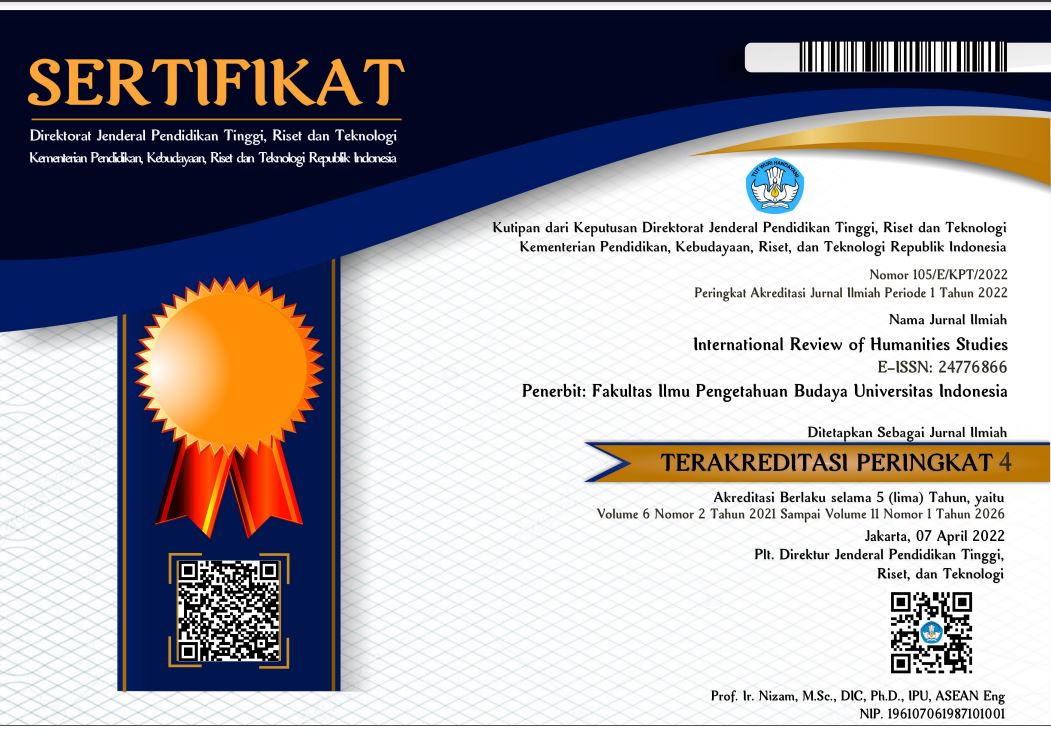International Review of Humanities Studies

Abstract
This paper discusses the life journey of buildings through the Biography of Things approach taken through a case study of the Bouwploeg building which is currently the Cut Meutia Mosque. The change from an office building as a profane building to a mosque as a sacred building is the reason for the biography of things approach. This research uses the main data in the form of the Cut Meutia Mosque building, which is still standing in Menteng, Central Jakarta. The research method used in this research is based on the K. R. Dark framework which consists of data sources, data, evidence, and interpretation. The results of this research show that there are physical changes, functions, and meanings in the building's life journey to become the Cut Meutia Mosque as a sacred building. This can be seen from the changes in materials and landscape. As well as the role of agency and structure behind it so that there can be a change in the building from profane to sacred.
References
Ashmore, W., & Sharer, R. J. (2003). Discovering our past: A brief introduction to archaeology. (Third edition). New York: McGraw-Hill.
Connerton, P. (2017). Seven types of forgetting. In The present word: Culture, society and the site of literature, 150-165. Routledge.
Dark, K. R. (1995). Theoretical archaeology. Cornell University Press.
Dinas Museum dan Pemugaran Provinsi DKI Jakarta. (2005). Bangunan Cagar Budaya di Propinsi DKI Jakarta.
Durkheim, E. (1915). The elementary forms of the religius life. IRCISOD.
Eliade, M. (1959). The sacred and the profane: The nature of religion. Houghton Mifflin Harcourt.
Gardner, Andrew. (2008). Agency. In Handbook of archaeological theories, 95-108. Rowman & Littlefield.
Gardner, Andrew. (2012). Introduction: social agency, power, and being human. In Agency uncovered: Archaeological perspectives on social agency power and being human, 11-25. Routledge.
Gosden, C & Marshall, Y. (1999). The cultural biography of objects. World Archaeology, 31(2), 169-178.
Heuken, A., & Pamungkas, G. (2001). Menteng: Kota taman pertama di Indonesia. Yayasan Cipta Loka Caraka.
Hodder, I. (2007). The “social” in archaeological theory: An historical and contemporary perspective. In A companion to social archaeology, 23-42. Blackwell Publishing Ltd.
Ihsan, N. (2019). Dari artefak ke biografi ruang: Perspektif biografis dalam membaca perkembangan lanskap kota. Tumotowa, 2(2), 72-81.
Joy, Jody. (2009). Reivigorating object biography: Reproducing the drama of object lives. World Archaeology, 41(4): 540-556.
Knappett, C. (2014). Materiality in archaeological theory. Encyclopedia of global archaeology, 1, 4700-4706.
Kopytoff, I. (1986). The cultural biography of things: Commoditization as process. In The social life of things: Commodities in cultural perspective, 70-73. Cambridge University Press.
Mariasusai, D. (1995). Fenomenologi agama. Yogyakarta: Kanisius.
McDonnell, T. E. (2023). Cultural objects, material culture, and materiality. Annual Review of Sociology, 49, 195-220.
Muhammad, N. (2013). Memahami konsep sakral dan profan dalam agama-agama. Substantia: Jurnal Ilmu-Ilmu Ushuluddin, 15(2), 266-278.
Nas, P., & de Vletter, M. (Eds.). (2009). Masa lalu dalam masa kini: Arsitektur di Indonesia. PT Gramedia Pustaka Utama.
Pusat Konservasi Cagar Budaya. (2022). Laporan Akhir Konservasi Bangunan Masjid Cut Meutia: Figure Perencanaan Arsitektur & Kajian Sejarah dan Arsitektur.
Ramadhana, D., & Dharoko, A. (2018). Ruang sakral dan profan dalam arsitektur Masjid Agung Demak, Jawa Tengah. Inersia: Jurnal Teknik Sipil dan Arsitektur, 14(1), 13-25.
Rizky, A. N. (2017). Pemaknaan bangunan bersejarah melalui visual: Studi kasus Masjid Cut Meutia - Gerbang Menteng yang terlupakan. Universitas Indonesia.
Shahab, A. (2006). Maria van Engels: Menantu Habib Kwitang. Penerbit Republika.
Waspodo. Y. A. (2009). Gedung Bouwploeg (Masjid Cut Mutia), Menteng: Tinjauan perkembangan bentuk arsitektural. Universitas Indonesia.
Verkaaik, O. (2013). Religious architecture: Anthropological perspectives. Amsterdam University Press.
Recommended Citation
Jahra, Fierda Al and Marwoto, Irmawati
(2024)
"APPROACH OF BIOGRAPHY OF OBJECTS: A PASSAGE FROM PROFANE TO SACRED,"
International Review of Humanities Studies: Vol. 9:
No.
2, Article 11.
DOI: 10.7454/irhs.v9i2.1315
Available at:
https://scholarhub.ui.ac.id/irhs/vol9/iss2/11
Included in
Anthropology Commons, Art and Design Commons, Creative Writing Commons, Cultural Heritage Law Commons, Education Law Commons, Film and Media Studies Commons, History Commons, Intellectual Property Law Commons, International and Area Studies Commons, Legal Writing and Research Commons, Linguistics Commons, Museum Studies Commons, Philosophy Commons, Urban Studies and Planning Commons



